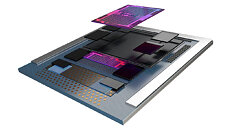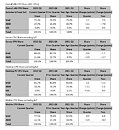UDOO Releases x86 Raspberry Pi Alternatives Aimed at Edge AI
UDOO, known for embedded and single-board computing, has launched a pair of x86 equipped SBCs utilizing Intel's Apollo Lake SoCs and aimed at the low-power machine learning and edge AI markets. The UDOO VISION line of SBCs come in two distinct flavors at launch: VISION X5 and VISION X7. As the names imply, the VISION X5 comes equipped with an Intel Atom x5-E3940, while the VISION X7 has an Intel Atom x7-E3950. Neither of these SoCs is particularly fresh, with the designs dating back to 2014, however for the intended use case they should provide ample performance. UDOO states,"The UDOO VISION is the ultimate choice for computer vision projects thanks to the excellent performance of the Intel Apollo Lake SoC [System on Chip] and the Intel distribution of OpenVINO framework ready to be installed."
Aside from the processor differences the VISION X5 comes with 4 GB of LPDDR4 DRAM and 32 GB of eMMC storage, while the higher spec VISION X7 comes with 8 GB of LPDDR4 and 64 GB eMMC. Both models include an ATmega32U4 microcontroller, a 26-pin Arduino Leonardo's pinout for modularity, a COM port supporting RS232/RS422/RS485, two USB 2.0 headers, two USB 3.0 ports, dual Gigabit Ethernet LAN, M.2 E-Key for WLAN/Bluetooth expansion, M.2 B-Key for SATA SSD expansion, RTC, infrared, one mini DisplayPort, one eDP connector, and a fan header for the bundled full-cover active heatsink. UDOO lists the VISION X5 at $349 USD, and the VISION X7 at $419 USD.
Aside from the processor differences the VISION X5 comes with 4 GB of LPDDR4 DRAM and 32 GB of eMMC storage, while the higher spec VISION X7 comes with 8 GB of LPDDR4 and 64 GB eMMC. Both models include an ATmega32U4 microcontroller, a 26-pin Arduino Leonardo's pinout for modularity, a COM port supporting RS232/RS422/RS485, two USB 2.0 headers, two USB 3.0 ports, dual Gigabit Ethernet LAN, M.2 E-Key for WLAN/Bluetooth expansion, M.2 B-Key for SATA SSD expansion, RTC, infrared, one mini DisplayPort, one eDP connector, and a fan header for the bundled full-cover active heatsink. UDOO lists the VISION X5 at $349 USD, and the VISION X7 at $419 USD.




















































